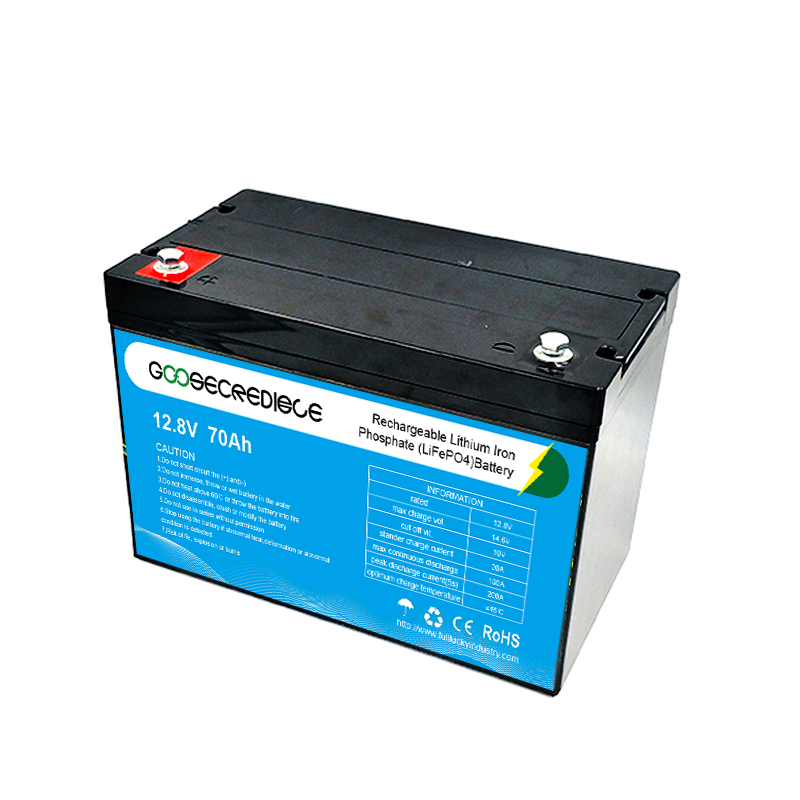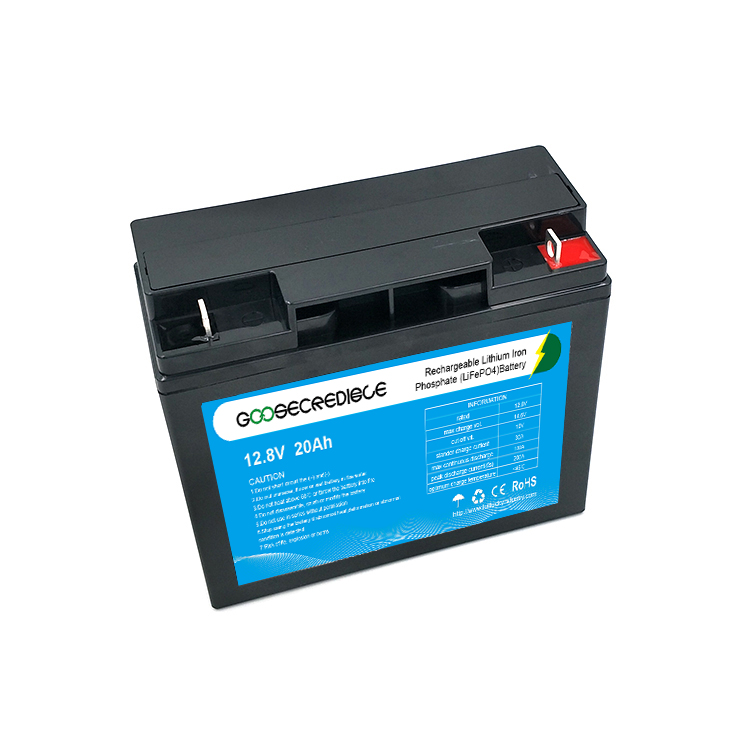Top Self-Heated LiFePO4 Battery Suppliers for Extreme Weather Conditions
LiFePO4 batteries are known for their high energy density, long cycle life, and low environmental impact. They are widely used in various applications, from electric vehicles to renewable energy storage systems. However, they are vulnerable to temperature extremes, especially low temperatures. When the temperature drops below a certain level, the battery’s performance and lifespan can be significantly reduced.
To overcome this problem, self-heating LiFePO4 batteries have been developed. These batteries have built-in heating elements that can maintain a constant temperature range, even in extreme weather conditions. They are ideal for applications that require reliable operation in harsh environments, such as military, aerospace, and outdoor electronics.
Capacity: The capacity of the battery determines how much energy it can store. You should choose a battery with a capacity that meets your power requirements.
Voltage: Voltage is another critical factor to consider. Most self-heated LiFePO4 batteries have a voltage of 12V or 24V, but some manufacturers offer batteries with different voltage ratings.
Temperature range: Self-heated LiFePO4 batteries are designed to work in extreme temperatures, but the temperature range varies from one battery to another. Choose a battery that can operate in the temperature range required for your application.
Size and weight: The size and weight of the battery are important if you’re using it for a portable application. Make sure the battery’s size and weight are compatible with your device’s requirements.
Certification: Make sure the battery supplier provides batteries that meet industry standards and certifications for safety, quality, and environmental compliance.
Find the product that best meets your needs.
Time: 2023-6-15
The demand for lithium iron phosphate (LiFePO4) batteries has been on the rise in recent years due to the increasing use of renewable energy sources and electric vehicles. LiFePO4 batteries are considered safer, more durable, and environmentally friendly compared to traditional lead-acid batteries. However, the price of LiFePO4 batteries has been a concern for many consumers. The cost of these batteries is higher than that of lead-acid batteries, which has led to their limited use in some applications. The price of LiFePO4 batteries is influenced by several factors, including raw material costs, manufacturing processes, and market demand. Raw material costs are a significant contributor to the price of LiFePO4 batteries. Lithium, iron, phosphorus, and other components used in these batteries can be expensive, and their prices can fluctuate based on market supply and demand. Additionally, the cost of transporting these materials to the battery manufacturing facilities can add to the final cost of the batteries. The manufacturing process of LiFePO4 batteries is also a factor in their price. The process requires specialized equipment and skilled labor, which can increase the overall cost of production. The cost of research and development for new battery technologies can also add to the production cost. Market demand is another factor that influences the price of LiFePO4 batteries. As the demand for electric vehicles and renewable energy sources increases, the demand for LiFePO4 batteries also increases, leading to higher prices. The availability of alternative battery technologies, such as lithium-ion batteries, can...
Time: 2023-7-17
When it comes to batteries, there are various types available on the market, each designed for specific uses. Two commonly used types are deep cycle batteries and starting batteries. Even though they may seem similar, they have distinct differences that make them suitable for different applications. In this article, we will explore the disparities between deep cycle batteries and starting batteries, helping you understand their unique characteristics and choose the right one for your needs. Firstly, let's take a closer look at deep cycle batteries. As the name suggests, deep cycle batteries are designed to provide a steady and continuous supply of power over an extended period. These batteries are commonly used in applications that require sustained energy output, such as recreational vehicles (RVs), boats, golf carts, and solar energy systems. Deep cycle batteries are built with thicker plates and a denser electrolyte solution, enabling them to withstand repetitive deep discharge cycles without significant damage to their overall capacity. Unlike deep cycle batteries, starting batteries are designed to deliver a high burst of power for short periods, specifically to start an engine. They are commonly found in cars, motorcycles, trucks, and other vehicles that require a powerful jolt to start the engine. Starting batteries are constructed with thinner plates and a higher concentration of electrolyte, allowing for a quick discharge of energy. One of the critical differences between these two types of batteries is their capacity to handle deep discharges. Deep cycle batteries can withstand discharges of...
Time: 2023-3-7
If you are looking for a reliable and high-quality starter battery supplier for your industrial equipment, there are several factors to consider before making a decision. A starter battery is a critical component of your equipment, and choosing the right supplier can help ensure that your equipment performs at optimal levels. Here are some tips on how to choose a high-quality starter battery supplier for your industrial equipment: Quality and Durability: Look for a supplier that offers high-quality starter batteries that are built to last. Check the specifications of the battery to ensure that it meets your equipment's power requirements and can withstand the harsh conditions of your industrial environment. Reputation: Choose a supplier with a good reputation in the industry. Look for online reviews and customer feedback to get an idea of their level of service and quality. Technical Support: Make sure the supplier offers technical support to help you with any questions or issues that may arise. Look for a supplier with experienced technical staff who can provide guidance on selecting the right battery for your equipment. Price and Value: Compare prices from different suppliers to ensure that you are getting a fair price for a high-quality product. Look for a supplier that offers value-added services such as battery testing, installation, and maintenance. Warranty: Look for a supplier that offers a warranty or guarantee on their products. This will give you peace of mind knowing that you can get a replacement or...
Time: 2023-7-8
Introduction: A boating adventure can be an exhilarating experience for many people. Whether it is sailing on calm waters or enjoying the thrill of water sports, boats provide a unique opportunity to connect with nature and unwind from the stresses of everyday life. However, to ensure that your boat operates smoothly and reliably, it is crucial to have a properly functioning cranking battery. This article will explore the importance of a cranking battery and how it contributes to the overall performance of a boat. What is a Cranking Battery? A cranking battery, also known as a starting battery, is a type of battery specifically designed to provide a burst of power required to start the engine of a boat. Unlike other batteries, such as deep cycle batteries used for continuous power supply, a cranking battery is built to deliver a high amount of current in a short period. Importance of a Cranking Battery: 1. Starting the Engine: A cranking battery is essential for starting the boat\'s engine. When you turn the ignition key, the battery supplies a high current to the starter motor, which in turn cranks the engine and initiates the combustion process. Without a fully charged and functional cranking battery, the engine may fail to start, hampering your boating experience. 2. Reliable Performance: A properly functioning cranking battery ensures reliable engine performance. It provides the necessary power to start the engine swiftly, eliminating any delays or complications. With a reliable cranking battery,...
Time: 2023-9-29
In today's technologically advanced world, computers have become an integral part of our daily lives. From work to entertainment, we rely heavily on these devices to carry out numerous tasks efficiently. One of the essential components of a computer is the mouse, which allows us to navigate through our digital world seamlessly. To power these devices, lithium batteries have emerged as the preferred choice due to their numerous advantages. In this article, we will explore the importance of lithium batteries in PC mice and how they enhance our computing experience. Lithium batteries have revolutionized the way we power our electronic devices. Compared to traditional alkaline batteries, lithium batteries offer several significant benefits. Firstly, they have a higher energy density, meaning they can store more power in a smaller and lighter package. This is particularly important for PC mice, as it allows for a sleek and lightweight design while still providing long-lasting battery life. Another advantage of lithium batteries is their longer shelf life. While alkaline batteries may lose their charge over time, lithium batteries can retain their power for extended periods, ensuring that your PC mouse is always ready for use. This is especially beneficial for individuals who travel frequently or use their laptops on the go, as they can rely on their mouse to function reliably without worrying about the battery dying unexpectedly. Furthermore, lithium batteries exhibit a low self-discharge rate. This means that even if you don't use your PC mouse for an extended period,...
Time: 2023-5-11
Introduction Lithium iron phosphate (LiFePO4) batteries have gained popularity in recent years due to their high energy density, low self-discharge rate, and long cycle life. With the increasing demand for renewable energy and electric vehicles, LiFePO4 batteries have become a preferred choice for many applications. In this article, we will compare the performance and specifications of various LiFePO4 batteries available in the market. Performance Comparison 1. Energy Density: LiFePO4 batteries have a lower energy density compared to other lithium-ion batteries such as Lithium Cobalt Oxide (LiCoO2). However, they have a higher energy density compared to lead-acid batteries. The energy density of LiFePO4 batteries ranges from 120 to 170 Wh/kg. 2. Cycle Life: LiFePO4 batteries have a longer cycle life compared to other lithium-ion batteries. The cycle life of LiFePO4 batteries ranges from 2000 to 7000 cycles, depending on the type and manufacturer. 3. Charging Speed: LiFePO4 batteries have a slower charging speed compared to other lithium-ion batteries. The charging time of LiFePO4 batteries ranges from 2 to 6 hours, depending on the type and manufacturer. 4. Discharge Rate: LiFePO4 batteries have a lower discharge rate compared to other lithium-ion batteries. The discharge rate of LiFePO4 batteries ranges from 1C to 3C, depending on the type and manufacturer. Specifications Comparison 1. Voltage: LiFePO4 batteries have a nominal voltage of 3.2 volts per cell. The voltage range of LiFePO4 batteries is between 2.0 volts to 3.65 volts per cell. 2. Capacity:...
Time: 2023-4-16
Introduction Every car owner knows how important it is to have a reliable car starter battery. Without it, you can start your car and get where you need to go. The last thing you want is to be stuck on the side of the road with a dead battery. That why it essential to invest in a high-quality car starter battery that you can count on. What is a Car Starter Battery? A car starter battery is a rechargeable battery that provides the electrical power to start a car engine. It designed to deliver a burst of energy to the starter motor, which then turns over the engine. The battery also powers the car lights, radio, and other electrical systems when the engine is off. Types of Car Starter Batteries There are several types of car starter batteries on the market. The most common types are lead-acid batteries, AGM batteries, and lithium-ion batteries. Lead-Acid Batteries Lead-acid batteries are the most common type of car starter battery. They affordable, reliable, and have been around for over a century. These batteries use lead plates and sulfuric acid to create a chemical reaction that produces electrical energy. They heavy, require maintenance, and have a shorter lifespan than other types of batteries. AGM Batteries AGM (absorbed glass mat) batteries are a newer type of car starter battery. They use a fiberglass mat to absorb the electrolyte instead of a liquid, making them leak-proof and maintenance-free....
Time: 2023-6-1
As the world continues to shift towards renewable energy sources, the importance of energy storage solutions has become more significant than ever before. One of the most promising solutions is Lithium Iron Phosphate (LiFePO4) battery packs. These batteries are known for their impressive performance, longevity, and safety, making them an ideal choice for a wide range of applications. What is a Lithium Iron Phosphate Battery Pack? A lithium iron phosphate battery pack is a rechargeable battery that uses LiFePO4 as its cathode material. Compared to other rechargeable batteries, LiFePO4 batteries are known for their long cycle life, impressive power output, and high energy density. They are also considered to be one of the safest types of lithium-ion batteries on the market. Why Choose a Lithium Iron Phosphate Battery Pack? 1. High Energy Density LiFePO4 batteries offer a high energy density, which means that they can store a lot of energy in a relatively small space. This makes them an ideal solution for applications where space is limited. 2. Long Cycle Life LiFePO4 batteries have a long cycle life compared to other types of rechargeable batteries. They can be charged and discharged over 2,000 times without any significant loss of capacity, making them an ideal choice for applications where long-term reliability is crucial. 3. Fast Charging LiFePO4 batteries can be charged at a much faster rate than other types of lithium-ion batteries. This is because they have a lower internal resistance, which...





















